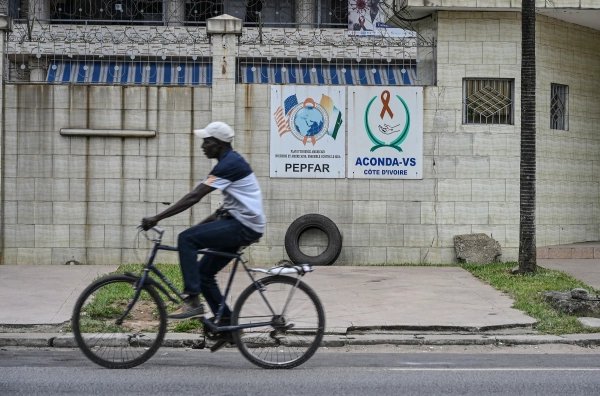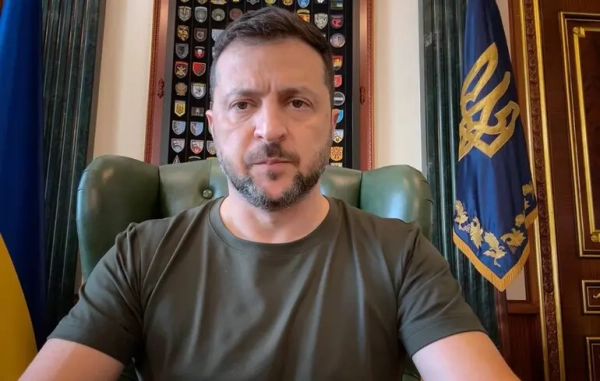
How many people are going to die because of the so-called Department of Government Efficiency’s abolition of USAID, and the Trump administration’s apparently-under-consideration plans to destroy PEPFAR, the landmark George W. Bush-era program to end the global AIDS epidemic? Millions — everyone agrees on that. But how many millions is an extraordinarily difficult question to answer.
Two factors make it particularly difficult.
First, the Trump administration’s plans are constantly shifting. And second, other actors change their behavior in response to US policy.
The Gates Foundation, for example, plans to accelerate its spending to help fill the void left by the US; I know of other, smaller funders trying to do the same thing. Aid recipients, too, can change their behavior: While some will die without their medication, others will find a way to pay for the medication at the expense of other necessities.
Between the uncertainty of the cuts and the unpredictable responses, it’s a real challenge to estimate the cost in human lives. But getting these numbers right is crucial. Since the Trump administration began demolishing USAID earlier this year, experts have made various attempts to quantify the impact. Some of them have been more careful than others.
One new analysis in the prominent medical journal the Lancet, for example, estimates that if all USAID work stops, between 8.5 million and 20 million people will die by 2030 — a mind-boggling sum even on the low end. The lower-end estimate is in line with other estimates — and even the higher end, it isn’t necessarily impossible, if no other actors step in.
This story was first featured in the Future Perfect newsletter.
Sign up here to explore the big, complicated problems the world faces and the most efficient ways to solve them. Sent twice a week.
But there were limitations to the paper’s approach that make it a bad idea to take those numbers at face value. The analysis drew criticism from some development economists, who warned that its approach was insufficiently rigorous, given the stakes of getting this right. Its design meant that the death toll estimate didn’t account for the potential impacts of other governments or aid agencies stepping in to help make up for cuts to USAID, among other issues. It also claimed that USAID had saved up to 90 million people over the last few decades, which would, implausibly, credit the agency with the entire fall in global mortality over the last 20 years.
All that is an immense shame — it’s already hard enough to get Americans to pay attention to desperately needed aid going to some of the poorest people in the world. Overestimates undermine the credibility of the entire effort to fix this crisis — credibility that it can’t afford to lose.
Counting the dead
During the chaotic initial months, as DOGE implemented cuts by unilaterally blocking payments, it was almost impossible to distinguish what was an intended cut and what had been cut off accidentally. At the time, I sent questions about the situation to the State Department, which answered only with copy-pasted statements unrelated to my questions.
Often the only way to learn whether a PEPFAR clinic was operating was to ask a volunteer to go there and look — and volunteers in Nigeria did precisely that for me at one point. As I tried to report on which programs were operating, I spoke with people whose programs were canceled and then uncanceled and then sometimes recanceled.
We’re now out of that initial chaos. But determining what’s going on remains a huge challenge. By far the most important single question for how many people die as a consequence of aid cuts is whether PEPFAR is gutted or continues to function.
Last week, we got good news on that front: Congress exempted PEPFAR from a recent package of spending cuts that had been pushed by the White House. This week, we got bad news: The State Department, according to documents obtained by the New York Times, is developing a plan to shut down the program anyway. The department has since distanced itself from the plan, stating that the document “is not reflective of the State Department’s policy on PEPFAR.”
Related
- Bill Gates shows what the end of perpetual philanthropy looks like
Any death toll estimate has to assume a specific scenario — anywhere from “everything is canceled” to “only certain announced cancellations will go forward, and everything else proceeds as before.” And it also has to make difficult methodological assumptions.
As a recent analysis by development economists Charles Kenny and Justin Sandefur put it, we need to know both “gross lives saved” — how many lifesaving medications were given out to patients who then survived? — and “net lives saved” — how many of those people are alive today who would have been dead but for the program?
Gross lives saved are relatively easy to measure. Net lives saved are much trickier — they’re often estimated by comparing deaths in countries that benefitted from US aid to those in countries that did not. But since those countries weren’t identical to begin with, and the US hardly chooses where it operates at random, deciding what differences between the countries to control for introduces a lot of potential for error. The more variables you control for, the easier it is to accidentally control for something that you would have actually wanted to consider in your results.
The Lancet study, for example, controlled for health spending by country. But controlling for that variable makes it impossible to look at cases where US aid spending displaced a country’s own national spending on health — meaning that it’s impossible to see how much US aid was actually improving the total health situation or just substituting for local money. And that was just one concern with the study, representative of just how hard it is to do this research.
Why this really, really matters
According to the State Department’s own estimate, PEPFAR has saved about 25 million lives since it began operating in 2004. Earlier this year, some friends and I, hoping to better understand that estimate, ran a hackathon to create our own analysis, estimating that the program has saved between 19 million and 30 million lives. Meanwhile, Kenny and Sandefur estimate that all US aid programs as a whole saved between 2.3 million and 5.6 million lives per year, the bulk of that from PEPFAR.
What we know for sure is this: More people will die than you or I could ever meet.
Even with the most rigorous research standards, the range of uncertainty is very large, and the numbers hinge on hard-to-communicate assumptions. Do you exclude data from the peak of the Covid-19 pandemic, given its confounding effects? Do you treat saving a child and saving an adult as the same? Do you assume drug prices would have fallen and made medication more accessible even without US aid? And do you report your conservative estimate or your high-end estimate?
This isn’t just an academic exercise. Because for the most part, you get one shot at communicating with the general public. There’s a lot happening in the world, and most people simply aren’t going to read five news stories about the nuances of foreign aid. Having an authoritative number would be invaluable for conveying the scale of the impending crisis — and it must be a reliable one, because an unrigorous overestimate just hands opponents an excuse to dismiss the entire foreign aid project as one run by politically motivated liars.
But the sheer chaos of the dismantlement, the lack of clarity about what the plan really is, and the difficulty in guessing how other governments and nonprofits will react (when they’re dealing with the same lack of clarity from the US) makes it hard to give a single answer. And it’s really hard to advocate for a program’s continuation when it’s impossible to keep track of the government’s plans for it.
I strongly suspect that’s intentional: The White House has repeatedly lost when seeking congressional approval to dismantle our best-performing life-saving programs. So the administration has resorted to doing it piecewise and, as much as possible, avoiding a public debate.
What we know for sure is this: More people will die than you or I could ever meet. It’s enough people that I am pretty sure we’ll be able to see a Trump-era spike on global child mortality graphs the way we can see the impacts of major wars. Most of the dead will be children whose lives could be saved at very little cost. And whether we save their lives next year is apparently, somehow, still under discussion.
Source: vox.com






